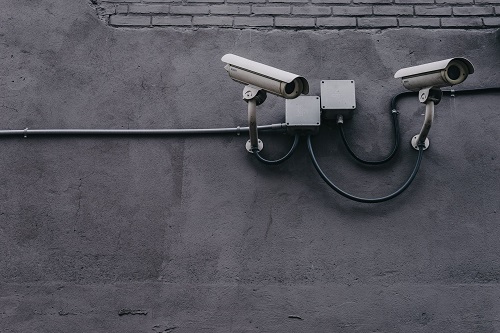Post Market Surveillance Under the EU MDR
There are only a handful of explicit things that you MUST do for Post Market Surveillance under the European Medical Device Regulation (MDR 2017/745); however, there are many things you SHOULD be doing to continuously monitor and update your products’ risk-benefit analysis.

Because of the broad sweeping nature of the updated EU MDR, it’s vitally important that medical device manufacturers have a robust PMS system in place that will hold up to Notified Body scrutiny.
Let’s take a look at the various topics on PMS for medical devices in the MDR and how your company might approach each one. This article will cover the applicable MDR articles on Post Market Surveillance and how you might go about crafting your Post Market Surveillance Strategy to satisfy all the new requirements.
Adverse Event and Incident Definitions
Before we begin, let’s quickly look at adverse events and incidents and how they are defined.
In the EU MDR, an adverse event is defined as “…any untoward medical occurrence, unintended disease or injury or any untoward clinical signs, including an abnormal laboratory finding, in subjects, users or other persons, in the context of a clinical investigation, whether or not related to the investigational device”.
An incident is defined as “…any malfunction or deterioration in the characteristics of the performance of a device made available on the market, including use-error due to ergonomic features, as well as any inadequacy in the information supplied by the manufacturer and any undesirable side-effect”.
As you can see, while adverse event and incident are oftentimes used interchangeably, they are not the same.
Medical Device Adverse Event Monitoring
You must monitor adverse events across as many markets as possible where your device or equivalent versions are sold. This is the ‘reactive’ part of your strategy and falls under Post Market Vigilance.
Under the EU MDR, you must monitor for and identify incidents involving your product and respond adequately based on the level of the incident (complaint vs. serious injury vs. death). If a Field Safety Corrective Action (FSCA) is published within the EU regarding your product, it is necessary to file a report with your Notified Body as soon as possible.

Trend Reporting
Trend reporting is mentioned in Article 88 and deals with the frequency of reported incidents related to your device. The bottom line of Article 88 is that responsibility falls on the manufacturer to assess the number of occurrences and make a judgment as to whether an increase in adverse events is significant enough to alter the benefit-risk analysis determination of their product.
With a systematic approach to adverse event reporting, trend reporting is merely an analysis of the adverse event data you should already be collecting and reviewing.

The Main Pillars of Post Market Surveillance
Updating the benefit/risk determination
Benefit-risk determination is created during your initial CE Marking filing and must be diligently updated over time. This is achieved by taking in all relevant data, such as scientific literature, adverse events, and technical product updates, and critically assessing whether the introduction of new information on your product has changed your previous assessment.
The more frequently this is updated the better. We recommend annual updates for all products, and for some, it is specifically required by the MDR.
Performance Evaluation – Clinical
By reviewing all current and new scientific literature you can further the case for your product’s efficacy in the current marketplace. The more evidence you can gather, the more you justify the high performance of your device, while simultaneously supporting your benefit-risk assessment.

Summarizing new Safety Information
Good Post Market Safety Updates should contain summaries and commentary on all adverse events that apply to your product. If possible, this should be comprehensive across all markets where your product or equivalent devices are sold.
Documenting your Process
It’s important to put a system in place to not only conduct Post Market Surveillance but also to document the steps your company has taken to continuously evaluate your product.

A comprehensive literature search across multiple scientific databases and adverse event databases is the best way to concisely meet your post-market analysis year after year.
Use Technology to Ensure Consistency
If your company is currently planning on doing Post Market Follow-Up (PMFC) and research manually, we urge you to take a look at the workload and stress level of your regulatory and quality teams. Keeping up the day-to-day maintenance of product registrations, new products, and the rest of the regulatory duties within your company, your team might not have the stamina to also do routine checks of all reports and maintain the proper documentation across all MDR requirements.
The use of technology to keep track of and re-run literature searches annually ensures that your PMS is completed consistently and with the same structure and organization over the years. This can be through purchasing literature search software and services through external contractors, such as CiteMed.
Incidence Reporting and Vigilance
Annex III of the MDR contains the technical documentation that is outlined in the preceding articles addressing Post Market Surveillance.

Required deadlines for reporting adverse events and incidents
The deadlines as outlined in Article 87 are as follows.
15 days for a serious incident
A serious incident is defined as an incident that is not an expected side effect or documented technical issue of the product. You are required to report the incident immediately after establishing a relationship with your product and not later than 15 days of ‘becoming aware of the incident’.
2 Days for a serious public health threat
If an incident related to your product is considered a ‘serious public health threat’ then you must report on it within 2 days of becoming aware. A serious public health threat is defined as “…an event which could result in imminent risk of death, serious deterioration of a person’s state of health, or serious illness, that may require prompt remedial action, and that may cause significant morbidity or mortality in humans, or the is unusual or unexpected for the given place in time”.

10 Days for death or serious deterioration of health
In the case of death or a serious deterioration of health, a report should be provided immediately after the manufacturer has suspected or established a causal relationship between the device and the incident and no later than 10 days after becoming aware of the incident.
Field Safety Corrective Actions for medical devices
Paragraph 1, section B, further states that any Field Safety Corrective Actions (FSCA) must be reported. These include FSCAs of related products in third countries. So if an equivalent device is recalled in a non-European Union country, it is your responsibility to report the incident to the European authorities.
Timelines
What’s interesting about Article 87 is that these requirements of reporting are all based on when the manufacturer becomes aware of the incident. They do not specify any guidelines or requirements for how long that process can or should take.

This is one of the more ambiguous pieces of your overall Post Market Surveillance system that should be addressed. It would certainly strengthen your submission to your notified body if you have a PMS plan for proactively finding and evaluating these incidents as close to their publication time/date as possible in place.
Monitoring for and Identifying Applicable Events
If you have unique products offered in only a few markets, the monitoring process may be manageable by subscribing to adverse event alerts (if the country in question has an automated notification system in place). However, if your product is more common and has several equivalent devices registered in different markets, compliance with article 87 becomes more challenging.
The easiest way to become aware of global incidents is to subscribe to as many adverse event alerts and vigilance databases as possible. It may be possible to simply go down the list of adverse event databases and compile your lists routinely for assessment. Another option is purchasing PMS software or services that do this for you. At CiteMed, for example, our PMS software aggregates all global incident lists that are publicly available to ensure we never miss an event.

Whether you choose to use a system or task human capital to routinely monitor and respond to adverse events, the important thing is that your monitoring PMS plan is presented in a way that inspires quality and consistency.
